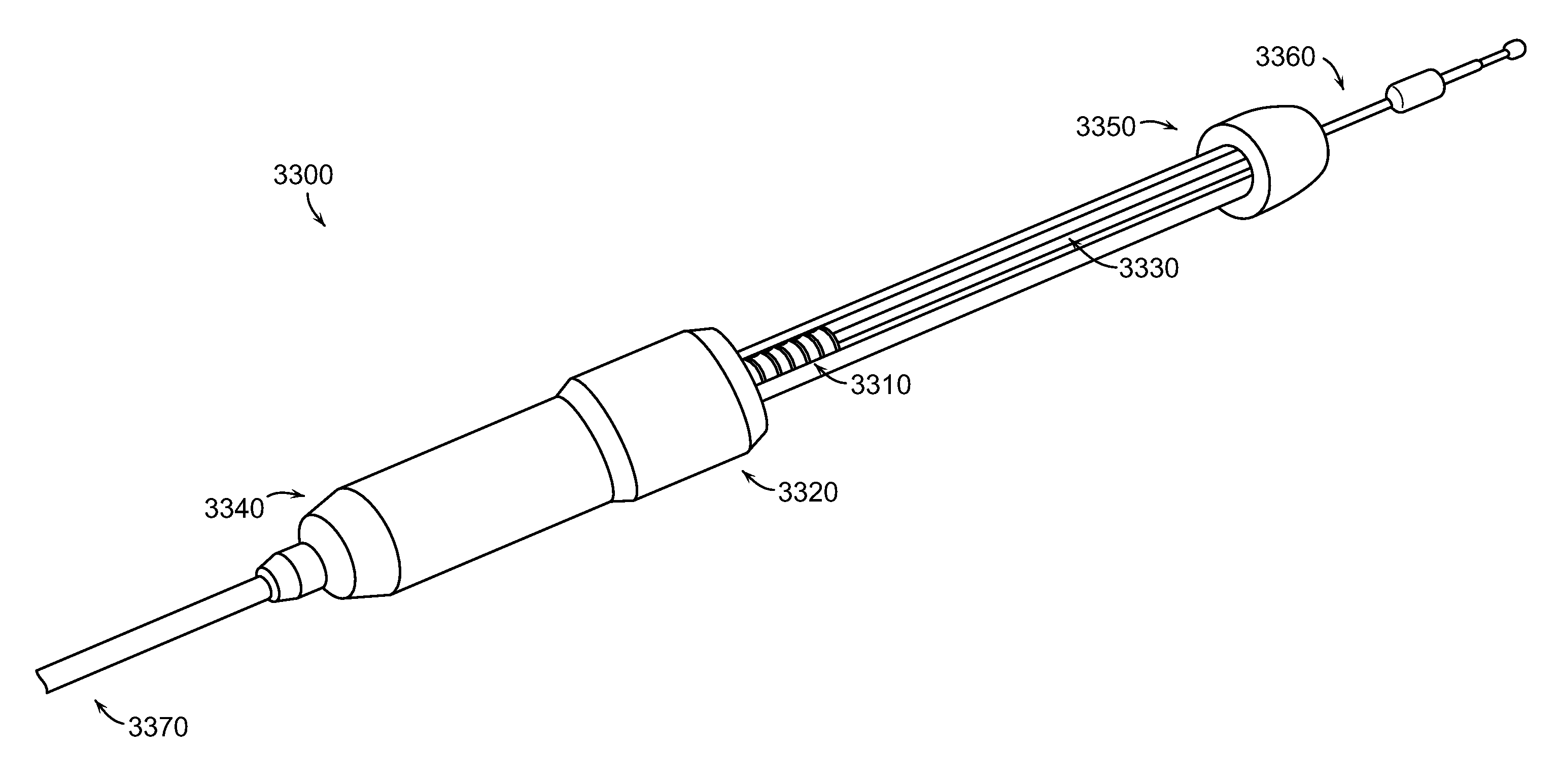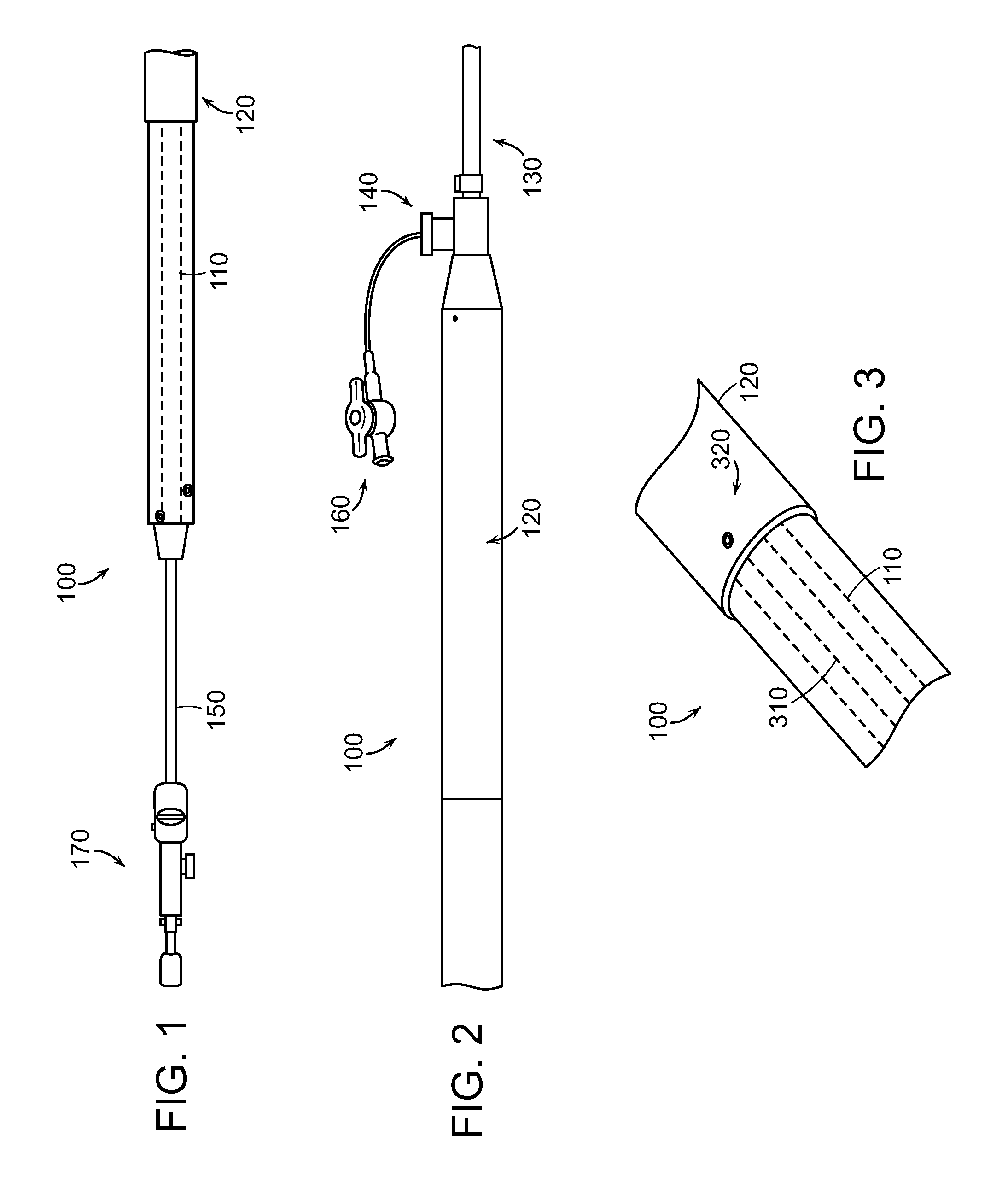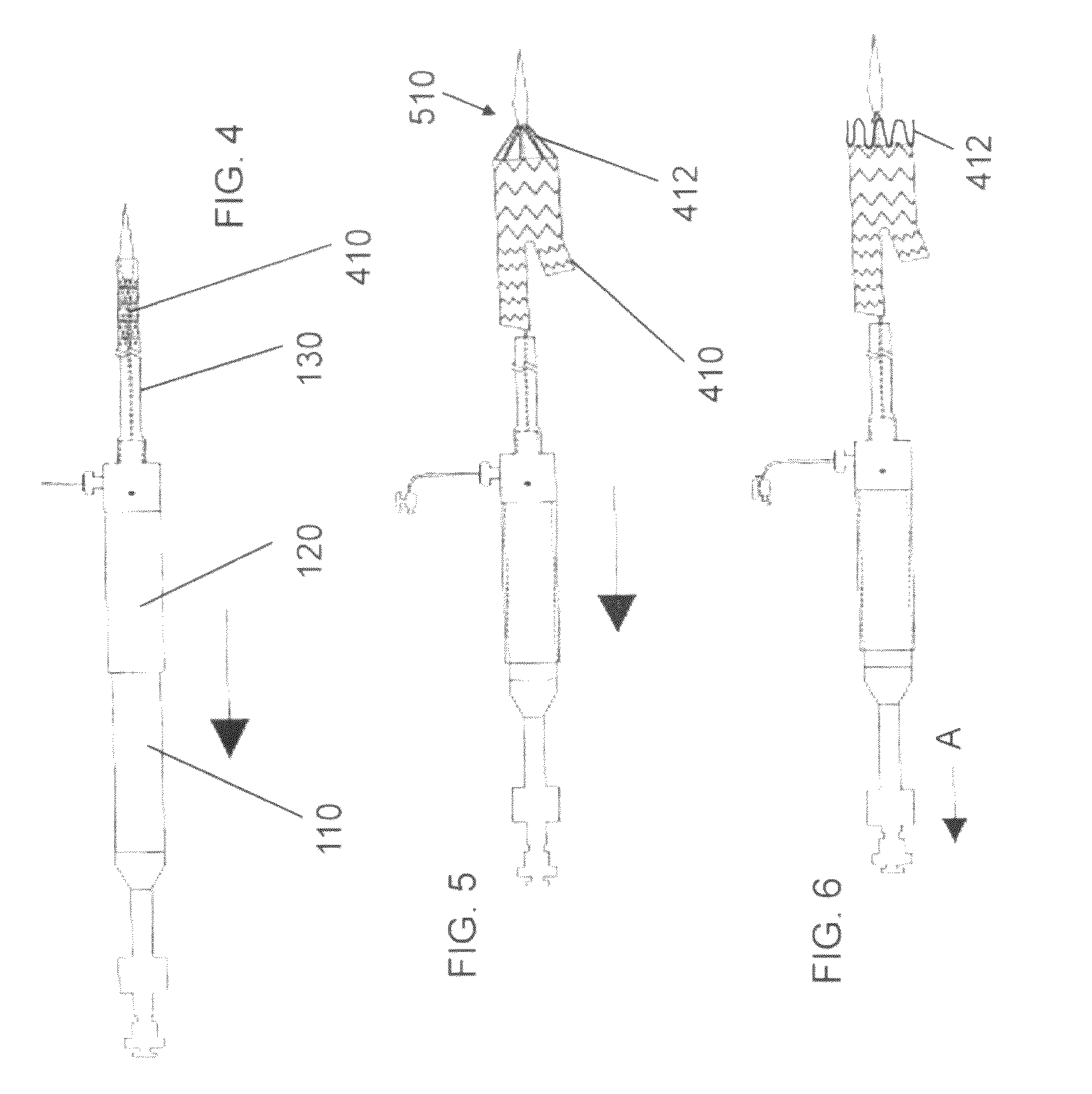Abdominal aortic aneurysms: systems and methods of use
a technology systems, applied in the field of abdominal aortic aneurysms : systems and methods of use, can solve the problems of high longitudinal force, high deployment force, and severe compression of very large stents into small diameter tubes or catheters, so as to avoid complications and death, accurate control of the graft system
- Summary
- Abstract
- Description
- Claims
- Application Information
AI Technical Summary
Benefits of technology
Problems solved by technology
Method used
Image
Examples
Embodiment Construction
[0161]The features and other details of the invention, either as steps of the invention or as combinations of parts of the invention, will now be more particularly described and pointed out in the claims. It will be understood that the particular embodiments of the invention are shown by way of illustration and not as limitations of the invention. The principle features of this invention can be employed in various embodiments without departing from the scope of the invention.
[0162]In an embodiment, represented by FIGS. 1 through 57, as an example, the invention is a stent graft delivery system 5500, comprising a handle that includes distal grip 5530 and handle body 5540 extending from one end of distal grip 5530, the handle defining conduit and track 5542 along a portion of the length of distal grip 5530 and handle body 5540; an internal lead screw assembly 5510 within the conduit, the internal lead screw assembly 5510 being moveable along a major axis of the conduit, and including ...
PUM
 Login to View More
Login to View More Abstract
Description
Claims
Application Information
 Login to View More
Login to View More - R&D
- Intellectual Property
- Life Sciences
- Materials
- Tech Scout
- Unparalleled Data Quality
- Higher Quality Content
- 60% Fewer Hallucinations
Browse by: Latest US Patents, China's latest patents, Technical Efficacy Thesaurus, Application Domain, Technology Topic, Popular Technical Reports.
© 2025 PatSnap. All rights reserved.Legal|Privacy policy|Modern Slavery Act Transparency Statement|Sitemap|About US| Contact US: help@patsnap.com



